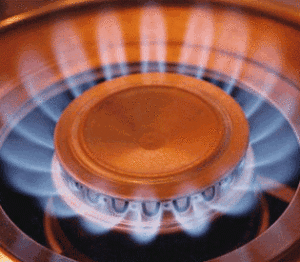 Natural gas rose for a third day on Wednesday amid expectations that cold blasts hitting the northern and eastern US will induce much stronger heating demand, keeping inventories near average levels.
Natural gas rose for a third day on Wednesday amid expectations that cold blasts hitting the northern and eastern US will induce much stronger heating demand, keeping inventories near average levels.
Natural gas for delivery in March traded 2.24 higher at $2.737 per million British thermal units at 9:33 GMT, having ranged between $2.745 and $2.685 during the day. The contract rose 3.08% on Tuesday to $2.677 per mBtu and is up 6% for the week so far.
According to NatGasWeather.com, natural gas demand in the US will be high compared to normal through February 17th, with a warmer weather trend for the west during the following seven days, while the central regions remain neutral and the East turns colder.
A strong cold blast will hit the northern US today and track into the East tomorrow, driving much stronger heating demand as overnight lows over the Great Lakes and Northeast drop in the single digits and below zero.
The Northeast will see new rounds of heavy snow accumulations in the following days, especially over the New England coast. An even more significant Arctic blast will follow through on Saturday, spreading below-freezing temperatures into the Southeast as well, driving locally high heating demand.
However, the western and central US will continue to enjoy warm weather throughout the weekend, NatGasWeather.com said, with readings over Texas and California holding in the upper 60s and 70s.
What is more, the western US will remain engulfed by higher-than-normal readings throughout next week as well, while weather systems carrying rain, snow and below-average temperatures track across the Midwest into the East. However, the truly cold Arctic air will remain confined to the Great Lakes and Northeast, pushing the mercury to 10-30 degrees below usual, apart from a few brief pauses of near-normal conditions.
Temperatures
According to AccuWeather.com, readings in New York on February 13th will bottom at 8 degrees Fahrenheit, 21 below usual, before sliding to as low as 3 degrees two days later. A return to near-seasonal readings is expected after February 20th. Chicago will see temperatures range between 6 and 9 degrees tomorrow, compared to the average 21-35, with highs not expected to exceed 20 degrees before February 22nd.
Down South, readings in Houston will reach 74 degrees today, 9 above the usual, and will remain mostly seasonal or slightly cooler for the remainder of the month. On the West Coast, Los Angeles will see temperatures peak at 85-88 degrees through February 14th, compared to the average of 68, before easing to seasonal and slightly higher levels through the rest of February.
Inventories
The Energy Information Administration reported last Thursday that US natural gas inventories fell by 115 billion cubic feet in the seven days through January 30th. Total gas held in US storage hubs amounted to 2.428 trillion cubic feet, narrowing the deficit to the five-year average stockpiles of 2.457 trillion to 1.2%, or 29 bcf, from 3.0% a week earlier. The surplus to the year-ago storage of 1.960 trillion cubic feet expanded to 23.9% from 14.6% during the preceding period.
This Thursday’s report is likely to show a withdrawal of around 165-175 bcf, near the five-year average of 178 billion cubic feet, as last weeks cold blasts over the North and East are factored in. Inventories declined by 234 bcf during the comparable week a year earlier.
However, last weekend and this week’s warm-up over the central, southern and western US will lead to a much thinner withdrawal for the following report due at February 19th. Supplies through the third week of February stand a great chance of turning deficits to the five-year average into surpluses. However, the persisting cold conditions over the North and this weekend’s spreading into into the Southeast will prevent any surpluses from expanding and keep supplies near the average through the end of the month.
Pivot Points
According to Binary Tribune’s daily analysis, March natural gas futures’ central pivot point stands at $2.677. In case the contract penetrates the first resistance level at $2.746 per million British thermal units, it will encounter next resistance at $2.814. If breached, upside movement may attempt to advance to $2.883 per mBtu.
If the energy source drops below its first support level at $2.609 per mBtu, it will next see support at $2.540. If the second key support zone is breached, the power-station fuel’s downward movement may extend to $2.472 per mBtu.
In weekly terms, the central pivot point is at $2.643. The three key resistance levels are as follows: R1 – $2.719, R2 – $2.859, R3 – $2.935. The three key support levels are: S1 – $2.503, S2 – $2.427, S3 – $2.287.




